Introduction
Elude is a platformer intended to raise awareness for clinical depression in which the player controls a character that moves through
landscapes and gameplay mechanics that represent emotional states metaphorically. It’s target audience is those close to sufferers of depression.
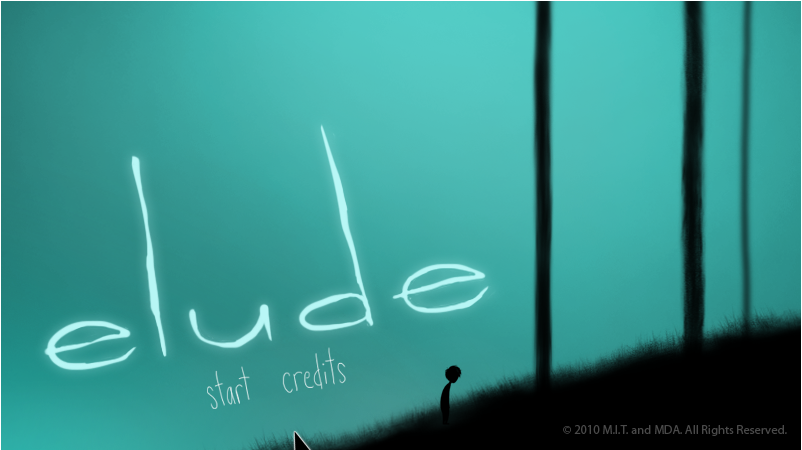
Below is a detailed analysis of this game roughly following Brian Winn's1 Design/Play/Experience framework, including:
Learning
"Elude" is a game that aims to educate people about depression. To do this, there were
a few learning goals the developers needed to have in the making of the game.
-Teach people, especially relatives of people with depression, about what having depression is like
-Model the different emotional states of depression effectively so that people can understand them
-Show that depression is not just about being sad. SHow that it is about not feeling connected to the outside world, and an overall feeling of hopelessness.
-Show that depressed people have trouble finding their passions and reaching for them.
-Allow the game to be use within a clinical context to help families of people with depression.
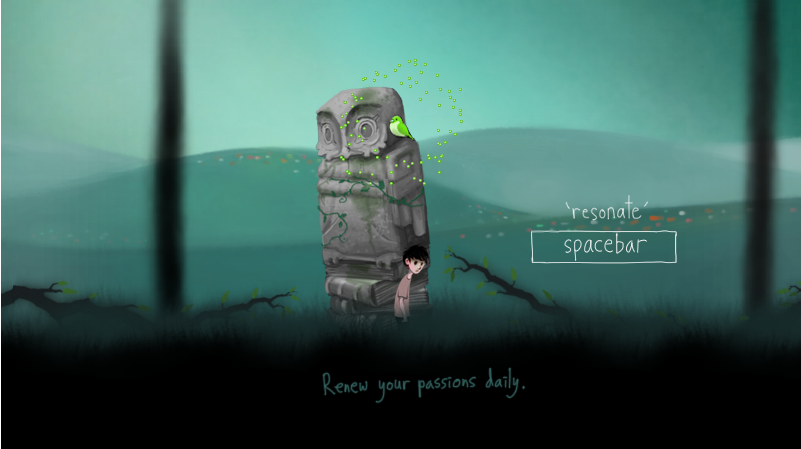
Storytelling
Everything in the game is a metaphorical representation of the experience of a clinically depressed person.
The game is set in a forest on three emotional levels. The normal level is on the forest floor and on tree
branches with birds on them. This level is where the player begins, and it is between the happiness and
depression levels physically. The birds, or passion objects, are supposed to be the passions that the
character resonates with. When the player is in the normal emotional state, he tries to climb higher and
higher to reach happiness, which is frolicking amongst leaves and flowers high above the treetops while happy
music plays. Eventually the player falls from the leaves back down to a normal emotional state.
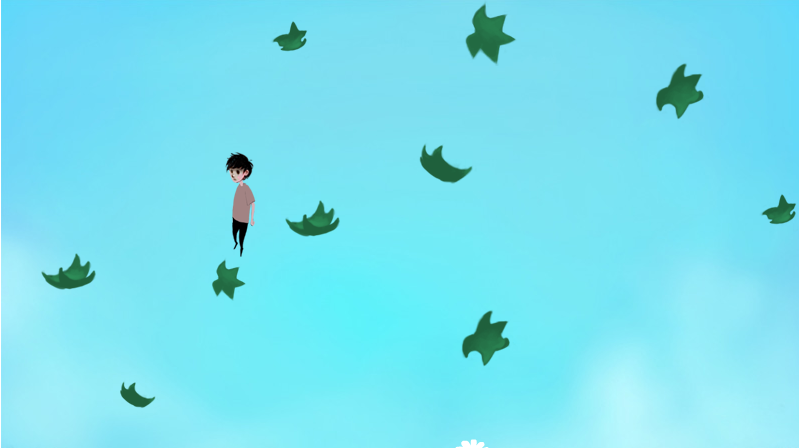
From here, the screen eventually dims and black tentacles pull the player into the depression level. In the depression
level, the player is confined to dark, cramped, subterranean areas where he is sometimes unable to do anything
but sink deeper down or walk to the side. The soundtrack is an ominous hollow ambient noise. Being trapped
in a dark place where the only thing you can do is to sink into a literal depression in the ground puts into
clear metaphor common descriptions of what depression is like, instills helplessness in the player, and supports
the understanding of the condition. The character is a silent man with a slumped posture and lethargic walk.
It is really the environments and gameplay that tell the story in this game, not the character interaction.
The story is the journey through the emotional states.
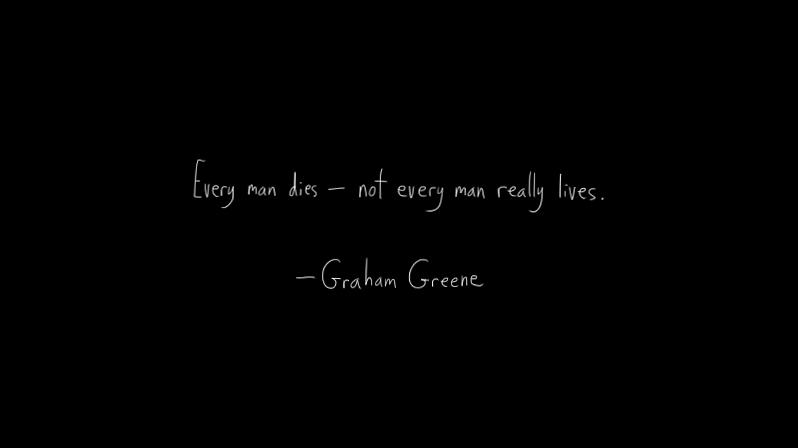
The player reaches happiness twice, depression twice,
and is on the normal level four or five times, transitioning between the two extreme states each time. These
maps displayed at the end reveal the emotional rollercoaster pattern the game follows, drawing a parallel to the
emotional patterns of the clinically depressed.
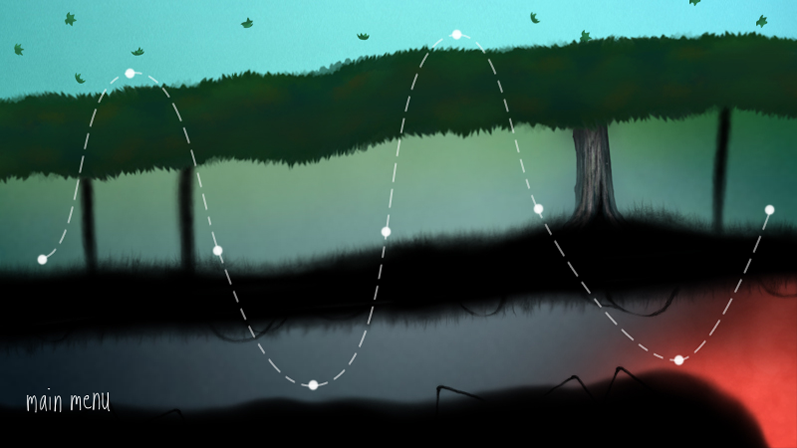
The final time the player reaches depression, the player is given a choice to walk off an
ominous cliff that represents suicide or walk up to the normal level. Either choice ends the game.
Gameplay
"Elude's" gameplay consists of three different types of game levels. The game alternates between these types to show
the different emotional states that occur with depression. The first level type is a fairly typical 2D side scrolling
platforming set up. These levels take place in a forest. The forest is filled with birds, statues, and trees.
The goals of these levels is to reach the top of the trees.
The player can move left and right and jump. In addition to these basic moves the player can also
call out to birds that are littered among the trees in the level. To call out to the birds, the player character must be within
a close enough proximity to them for the birds to hear their voice. Calling out to the birds in turn allows the player to
jump higher so that they can reach higher into the trees. Reaching the top of the trees ends the level and moves on to the
next type. This stage of the game represents a normal mood for the player.
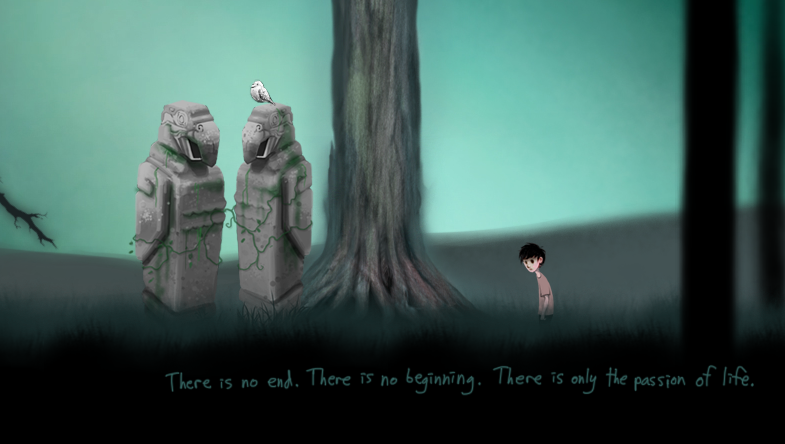
The second type of level in "Elude" takes place above the trees in the sky. In this stage of the game, the player character can only move left and right. In the sky, the player can fly higher and higher by bouncing on leaves and flowers. Bouncing on a flower sends the player character up much higher, while the leaves just send the character up a little bit higher. As the player character goes higher and higher, there are less and less flowers and leaves to bounce on. Eventually, the player will run out of flowers and leaves to bounce on and fall back down to the trees. This ends the second stage of gameplay. This stage of gameplay represents a happy mood for the player.
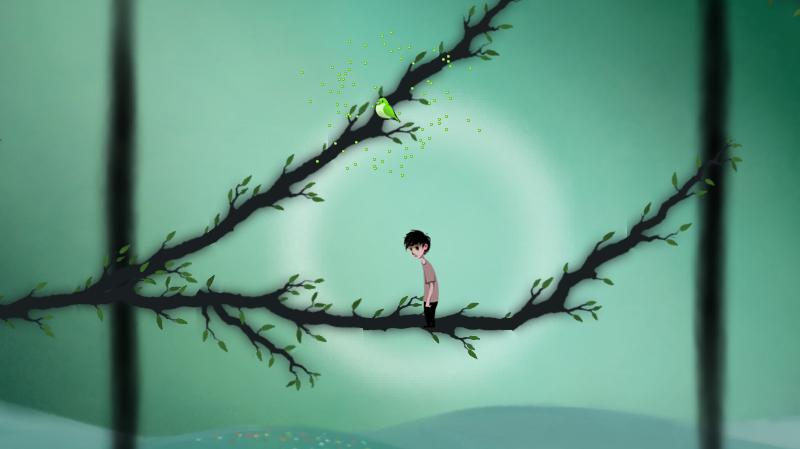
The third type of gameplay appears to be much like the first type at the first. The player character starts out in a dark forest
and can call out to birds. However, after climbing a little ways up into the trees, a bunch of black tentacles come from below
and drag the player character down underneath the ground. Here the player is restricted to walking around in a confined space until
the character is sucked down deeper and deeper into the ground. After a few repetition of this, the character is taken back to the
first type of level. This stage of the gameplay represents the sadness and hopelessness that people with depression has.
This sequence of levels repeats once and then the game ends. Normally, a serious game this short would not enough time
to succeed in its teaching goals, but in the case of Elude, the length feels about right. The learning goals of the game
are more about giving the player an emotional feeling rather than conveying information. The player is meant to understand
the emotions and emotional changes that occur with.

The game part of "Elude" falls a little bit flat. While the gameplay itself is alright, the games progresses by holding the players
hand through the adventure. There are no interesting choices to make in the game. In the forest, the player cannot die. They will alway
make it to the top of the trees eventually. In the sky, falling back down to the trees is an inevitability. The player can bounce higher and higher,
but eventually, they will run out of leaves and flowers to bounce on and fall back into the forest, regardless of their skill. The third stage also
require no skills or choices from the player. The player will inevitably be dragged down beneath the ground by tentacles, continually sink into the ground,
and be spat back out to the forest level again. However, "Elude" is not really a game about challenging the player. The interactive elements
of the game serve as a way of delivering the emotions that the player feels. For example, the joy of being in the sky bouncing higher is heighten
through the ability to play it. In this aspect, the game succeeds. The emotions are easily felt by the player,
and it gives the player an idea of how someone with depression might feel. The happiness immediately followed by hopelessness come through well, and
will likely leave an impact on the player.
However, the fact that choices do not really matter remain. While most people will be able to look past this, it still very noticeable and takes away
from the experience.
User Experience
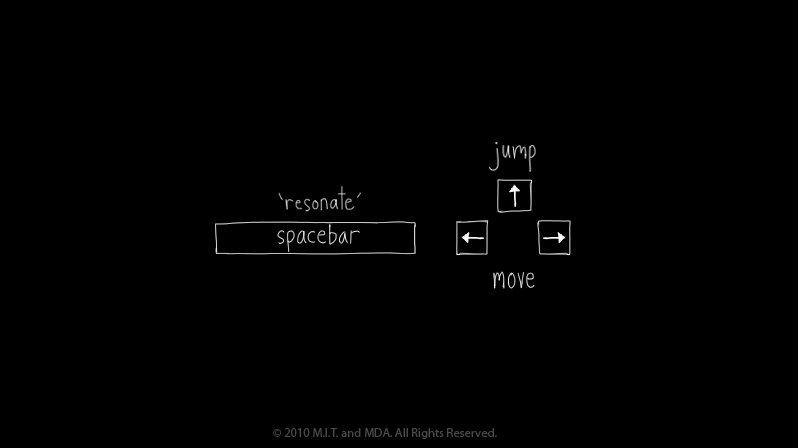
The player walks with the left and right arrow keys, jumps with the up arrow key, and resonates with the
space bar. These controls are simple and intuitive. When the player has resonated with a passion bird,
the avatar glows, indicating that he can jump higher. This may not be apparent unless the player is paying
close attention, and not noticing this could lead the player to become confused as to whether or not the birds
do anything, or whether or not their avatar’s varying jump height is arbitrary, and that could cause the whole
message about the importance of passions that resonate with a person in their pursuit of happiness to be lost on the player.
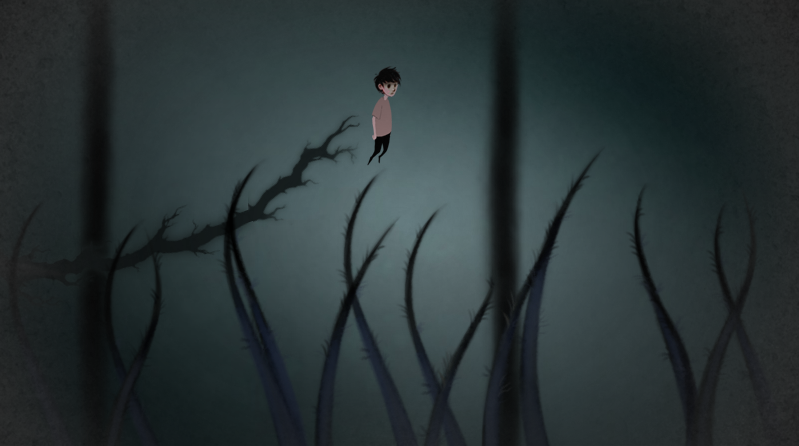
Technology
"Elude" was built using the Flash based game engine, Flixel. For a game that wishes to reach a large
amount of people, this was probably a good choice. The engine allows it to be easily accessible to most
people in the general population, and it allows it to be played from anywhere there is an internet connection
available. The game is a 2D platformer, so another, more complex engine would probably not do much, if anything at all, to
improve the learning goals or the gameplay.
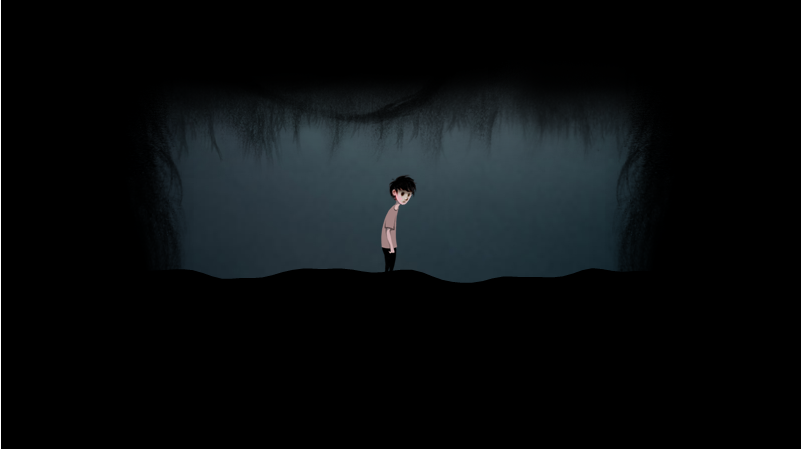
Assessment
Elude succeeds in being one big extended metaphor for cycles of happiness and clinical depression. It succeeds in doing this visually, aurally, and through the levels of player engagement and enjoyment in each of the gameplay stages, and works to affect the player emotionally. Happiness is a fun, fast-paced game, normal is a mediocre platformer, and depression is very slow and takes control away from the player. If this were given to the relative of a clinically depressed person, that person would understand on a vague emotional level that depression is like sinking in a deep, dark, pit and feeling like there is nothing you can do about it. But this does not seem like all that someone in this position needs to know, and it is not all that a game can teach them. This game does nothing to address the practical specifics that might be most useful for someone who is close to a sufferer of depression, like how they should behave around this person, how often they should visit them, how to respond if they talk about suicide, or anything at all that involves supporting the person when they need the most support. Elude is a very good and visceral art game, but it is limited in its usefulness as a teaching tool for the lack of actual practical knowledge it conveys.
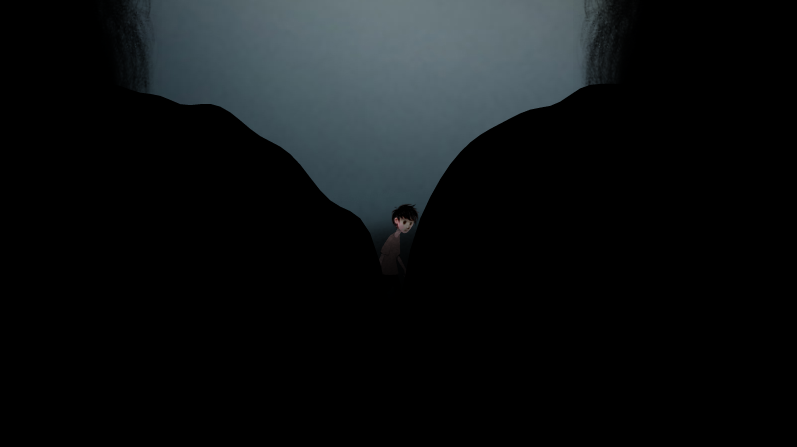
Conclusion
"Elude" falls a little bit short in both its gameplay and teaching goals. The gameplay is functional, but lacks challenge or interesting choices. In term of the learning goals, the game does not teach the player about depression in a concrete way. Because of this, the game somewhat fails in its learning goals. It doesn't explain exactly what depression is or that people with depression often struggle to find and pursue their passions. However, the game succeeds in teaching based on the emotions the player feels during the game. After playing this game, the player will not know the definition of depression or what characterizes a clincally depressed person, but they will understand what it might feel like to be depressed. This will help the target audience, the families of people with depression, to understand the depressed person better. At the end of the day, this is main thing the game meant to do, and it succeeds in being a unique and interesting way to experience depression. However, this does not mean that the game would be able to stand on it own in teaching players about depression. "Elude" feels like it would make an excellent supplement to a program that is aiming to teach about depression. The program could teach factual knowledge through books, movies, or other mediums, and use the game to show the participants what depression might feel like. Looking at the game this way, it is easy to see how it could be educational. Elude is very different type of serious game, one that other types of games could learn from. Instead of making a game with with purely fact based goals and information, it incorporates emotions to create a meaningful experience that could stick with the player.
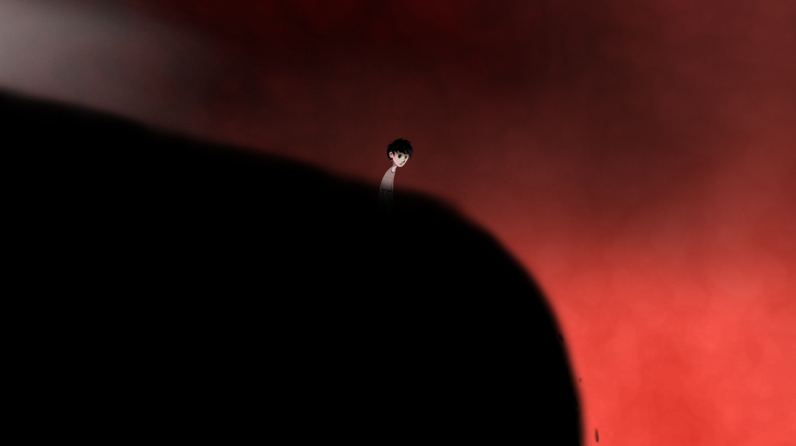
Elude could be improved through the addition of some fact based information. While the game's primary focus is in emotion, it
would be nice to have some more background on depression to give the player a more-well rounded depression education. This could
be done through text on the screen that would appear if the player walked to certain point in the level, or through text in between
levels. The problem that could come with this implementation of more factual information is that it could clash with the emotion
of game, eliminating the thing that "Elude" did well to begin with. The facts could bring the player out of the experience and remind
them that they are playing a game, causing the player not to be as emotionally invested in the game. The other way that "Elude" could
be improved is through the use of a game design that has consequences. As it stands now, the game has no challenge, and that could
also bring the player out of the experience. Making it so that the player's action has meaning would be helpful. This could occur through
the character being able to die, fail a task, or get different ending or levels based on the player's performance. The problem here is
that it could frustrate some players in the intended audience. However, a slight challenge would do a lot to improve the player's
motivation to play.
"Elude" is a serious game with a lot of emotion and some interesting ideas. It could prove to be useful for people given a little tweaking
and some more evaluation. It is not perfect, but it tries something different.
